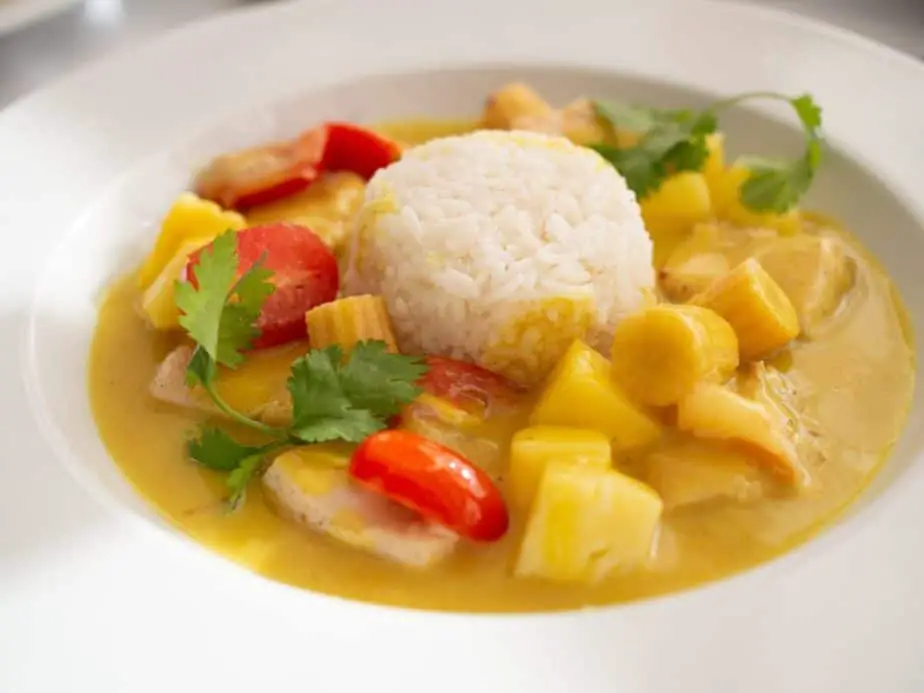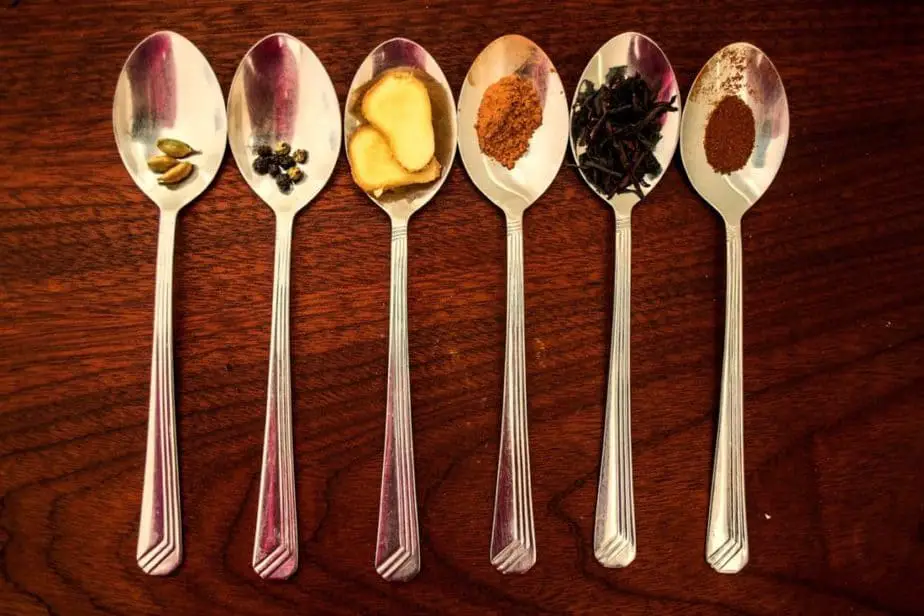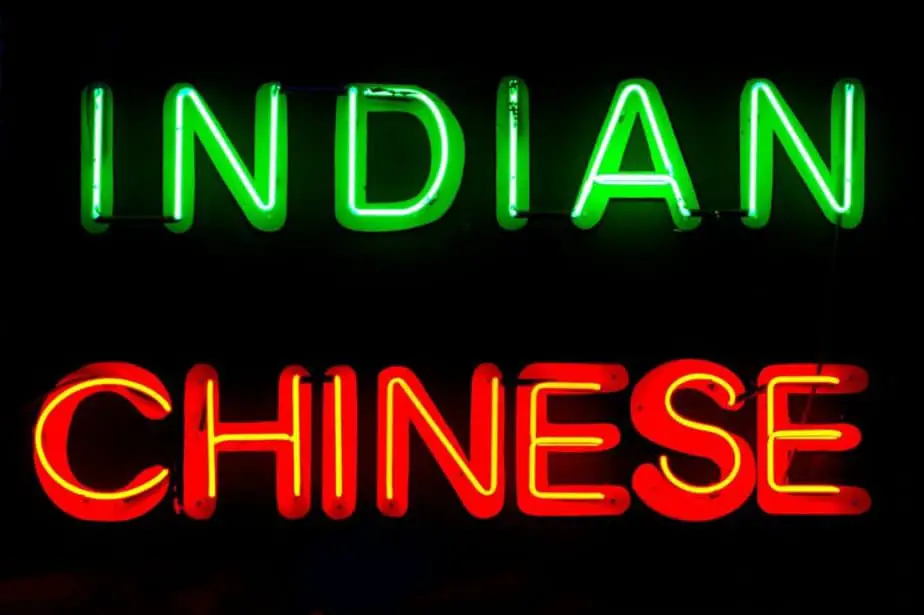Indian food is known around the world as being delicious and spicy! And as a guy who’s been living in India since 2018 friends and family keep asking me, why Indian food is so expensive?
Indian food can cost 45% more than Chinese or Thai food because there are 20 to 30 ingredients in many dishes, the sauces can take hours to cook and the spices are the most expensive in the world. There are also fewer restaurants and less competition since Indian food is less popular in the USA.
There are many reasons why Indian restaurant charge higher prices, but like most restaurants, they base their prices on these factors:
- The Quality and Types of Food – The quality of the food has a big impact on the price. Better quality meats, vegetables, and spices means higher prices. Imported foods also cost more. Yet, considering that curry may have once been used to cover the taste of rotting meat, it seems like Indian restaurants could save money on less quality meats and vegetables since they will have been marinaded in sauces. However, spices can be expensive.
- Rent – If the restaurant is in a nice area or urban center, the prices will be higher.
- Labor – Indian dishes take a long time to make, which means paying the cooks to prepare the dishes. In India, some cooks could spend their whole day cooking a delicious sauce.
- Atmosphere – The restaurant exterior, table clothes, cutlery, dishes, and more cost money.
Considering these variables, Indian food can cost more money. If you were to look at Uber Eats in the USA, you will see Indian entrees like Chicken Tikka Masala for $15. Yet, Chinese entrees like Kung Pao Chicken are $10.99. Or you can find Thai Panang Curry Chicken for $10.95.
In the UK, you will see an Indian chicken biriyani for £11.49… while Chinese entrees like Chicken style curry are £7.00.
So why is Indian food costing so much money? If you’re curious about the details, I’ll break it down in this article, so read on…
Indian Dishes Have 20 to 30 Ingredients

Indian curry dishes have 60% more ingredients than Thai curry dishes. Although this is slightly misleading since curry is a British invention and is used to refer to MOST Indian dishes. Curry powder is actually hard to find in India.
Curry comes from the Tamil word (kari) for “sauce.” There are countless sauces in India and countless recipes for the same sauce.
Arguably the most popular Indian dish is chicken tikka masala dish (which actually isn’t authentically Indian but we’ll give it a pass since most people think it is). If you look through recipes only, you’ll find around 24 ingredients!
With a similar Thai chicken curry recipe, there are only 15 ingredients!
That’s 60% more ingredients, which can drive the costs up. Not only to source the many ingredients but also to keep them fresh.
Indian Spices Can Be Expensive

Christopher Columbus discovered America because he was heading to the West Indies near India looking for spices (and probably good deals on them). Spices were more expensive than gold in those days and for good reason.
Today, spices are still expensive and Indian dishes often use many spices. The most common Indian spices are:
- Turmeric
- Coriander
- Cumin
- Saffron
- Mustard Seed
- Cardamom
- Garam masala
- Fenugreek
- Black pepper
- Asafoetida
- Clove
- Chilies
- Ginger
- Garlic
- Fennel
- Black cardamom
- Nutmeg
- Black mustard seeds
- Poppy seeds
- Cayenne peppers
The most expensive spices in the world are mostly on this list: saffron, cardamom, cloves, cinnamon, black pepper, and turmeric.
Saffron is the most expensive spice in the world and costs $500 to $5000 per pound. It is often grown in the Kashmir region of India, is the stamen of a flower so is labor-intensive to cultivate.
Long pepper, also called pippali, costs $45 per pound and is used in some South Indian dishes like roasted meats and lentil stews. It’s similar to black pepper, yet resembling cardamom, nutmeg, and cinnamon as well.
Black cumin seeds cost $38 per pound and are used in the delicious naan bread. They are also common in curry and lentil soups.
Cardamom costs $30 per pound and has a nickname of the “Queen of Spices.” It’s grown in India, although Guatemala is the biggest producer and exporter. It comes in green and black forms. You’ll find it in many curry dishes.
Cloves cost $10 per pound and are used in the popular garam masala. It is also used in common Indian dishes like biryani and pilaf.
Cinnamon costs $6 per pound and can be found in India. It’s used in a lot of curry dishes such as an ingredient in garam masala and you can find it in Butter chicken.
Black pepper costs $3 per pound and is the king of spices and ‘Black Gold.’ It was once heavily exported from Kerala in Southern India and is a very common spice in many dishes. It’s one of the main spices used in Indian food.
Turmeric costs $3 per pound and is the spice most Americans associate with Indian food. It has a distinctive yellow color that is a primary ingredient in curry powder. This is why it is often used for food coloring or dye. Many Indians only use a dash for its medicinal purposes though, since the flavor is bitter.
Indian Food Can Take Hours to Cook

In India, many people take a much different approach to cooking than in the West and it is more time-intensive.
Recipe books aren’t used as much. Curry powder isn’t used as much as you might think… instead unique blends of spices are made for each dish. These blends can vary from region to region, state to state, and household to household.
A knowledgeable and experienced Indian chef is going to add each spice at a particular time in the making of the dish, for instance when making a masala dish, you would add garam masala at the end of the cooking process.
Whereas in America, we are used to buying a can or jar of sauce, mixing it in a frying pan, and in 5 minutes we want it done… okay, maybe that is just cooks like myself but cooking fast is more of the mindset.
Apparently there are 198,337 fast-food restaurants in the USA, while Indian only has 2,700 chain fast food outlets, despite having 1.3 billion Indians versus 327 million Americans.
Another example is how tea is made at the roadside chai stalls. The local chai walla brews his tea at 5 am and keeps it brewing all day. He is constantly making a new brew, adding ingredients, and letting it simmer. All the time he invests helps to make a delicious tea… However, all that time costs money and labor time.
In the same way, an Indian restaurant is going to spend money on labor for the cooks to come in ahead of time to prepare the labor-intensive sauces.
Indian Food Is Less Popular Than Chinese or Thai Food

In Britain, chicken tikka masala was the “national dish” in 2001 and there are curry houses everywhere.
Yet in the USA, Chinese and Thai food is much more popular. Krishnendu Ray, a professor at NYU who has studied Indian food for more than 10 years (I didn’t know that was a degree!) found that there were 40,000 Chinese and Mexican restaurants in the USA. Yet only 5,000 Indian restaurants.
Which is odd considering that NYC has an estimated 2000% more Indians than Thai people.
The amount of money spent on Indian food is $35 million in 2011, according to the Specialty Food Association. However, people spent $1.636 billion on Mexican food and $767 million on Asian food.

In most towns, you can find a few Chinese restaurants and in big cities, there can be hundreds of restaurants. This leads to more competition, which can drive the prices down much lower than what you might find in Indian restaurants.
Final Words
Indian food can cost 45% more than similar-priced dishes at comparable Chinese and Thai restaurants. Typical Indian entrees cost $15, while Chinese and Thai entrees are around $10.
Indian food has a lot of ingredients, expensive spices, long cooking times, and less competition so it can drive the prices higher than other types of food. However, if you have developed a taste for Indian food then that extra $5 is money well spent.
If you are curious about Indian food, some people were asking: Do Indian Restaurants Sprinkle Cow Urine on Your Food? I debunked this urban myth in that article.
Related Articles:

